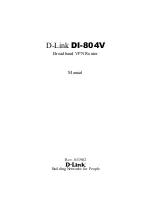
190
allow
: Allows advertising address prefixes. By default, no address prefixes are allowed to be advertised
when the overload bit is set.
external
: Allows advertising IP address prefixes redistributed from other routing protocols with the
allow
keyword specified.
interlevel
: Allows advertising IP address prefixes learned from different IS-IS levels with the
allow
keyword specified.
Usage guidelines
If the
on-startup
keyword is not specified, the command sets the overload bit immediately until the
undo
set-overload
command is executed.
If the
on-startup
keyword is specified, IS-IS sets the overload bit upon system startup and keeps it set
within the
timeout2
interval.
Examples
# Set overload flag on the current router.
<Sysname> system-view
[Sysname] isis 1
[Sysname-isis-1] set-overload
summary (IS-IS view)
Use
summary
to configure a summary route.
Use
undo summary
to remove a summary route.
Syntax
summary
ip-address
{
mask
|
mask-length
} [
avoid-feedback
|
generate_null0_route
| [
level-1
|
level-1-2
|
level-2
] |
tag
tag
] *
undo summary
ip-address
{
mask
|
mask-length
}
[
level-1
|
level-1-2
|
level-2
]
Default
No summarization is configured.
Views
IS-IS view
Predefined user roles
network-admin
Parameters
ip-address
: Specifies the destination IP address of the summary route.
mask
: Specifies the mask of the destination IP address, in dotted decimal format.
mask-length
: Specifies the mask length of the summary route, in the range of 0 to 32.
avoid-feedback
: Avoids learning summary routes by route calculation.
generate_null0_route
: Generates the Null 0 route to avoid routing loops.
level-1
: Summarizes only the routes redistributed to Level-1.
level-1-2
: Summarizes the routes redistributed to both Level-1 and Level-2.
















































